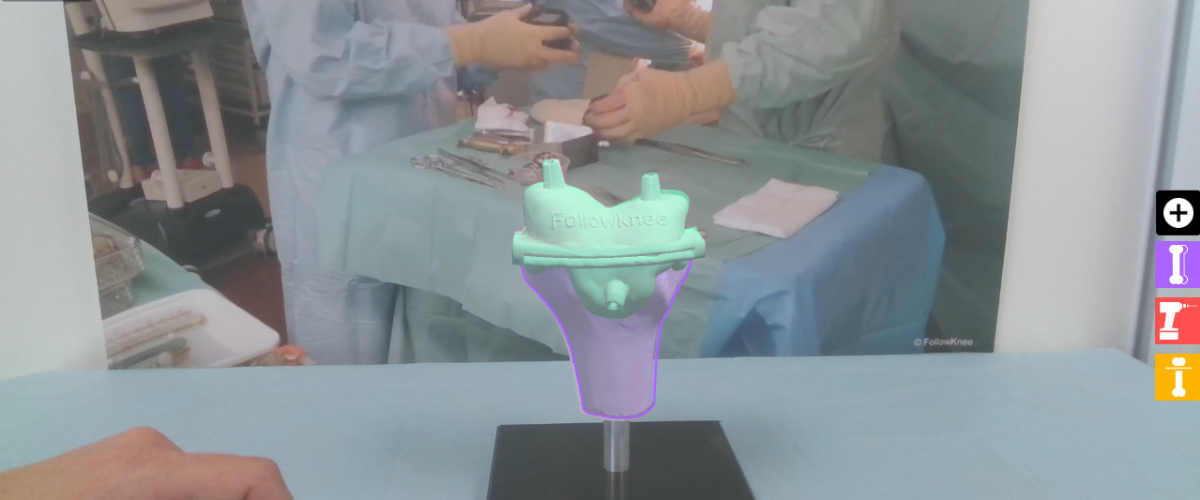At the CARS international science conference, b<>com presented a demonstration of an orthopedic surgery augmented reality application. This prototype developed through the Followknee Augmented Reality group is an alternative to existing 3D medical location technologies (optical, infrared, magnetic).
Led by the Brest-based team of LaTIM* and its director, Prof. Éric Stindel, the scientific and industrial consortium that came about through the RHU FollowKnee project, has presented its initial results one year after launching, with a focus on its Augmented Reality work.
Developing a connected prosthesis is one thing, but giving surgeons the ability to implant one with high precision is another challenge altogether. Yet that’s what the consortium’s teams were able to do, developing guidance tools that draw on Augmented Reality concepts to allow surgeons to simultaneously view both the patient being operated on and the prosthesis placement parameters, much like an airplane pilot. This workgroup has brought together the complementary expertise of LaTIM (Medical Information Processing Laboratory), the IRT (Institute of Research and Technology) b<>com, and Immersion, a company that specialized in augmented/virtual reality and collaborative solutions.
After meeting with professional in operating rooms, Immersion, the workgroup’s coordinator, launched a wide-ranging study on the needs of orthopedic surgeons: “The analysis of needs will affect how this new tool is received by health care professionals,” explains Julien Castel, Director of Research at Immersion. “The results of this analysis will then be matched up against the planned technical solutions, in order to define the final specifications.” To do so, Immersion developed a series of tests to compare all Augmented Reality systems (performance, ergonomics, certification, etc.) to evaluate how useful they would be given the surgeons’ working conditions.
The workgroup is expected to deliver the first operational version of this solution in 2022.
Initial technical AR results previewed in Rennes
At the CARS international science conferencen (2020, June in Rennes), b<>com presented a demonstration of an orthopedic surgery augmented reality application. This prototype developed through the Followknee Augmented Reality group is an alternative to existing 3D medical location technologies (optical, infrared, magnetic). It includes technologies that sense the location of 3D objects and track them in real time using a single depth camera, unlike current augmented reality surgical applications that require markers attached to the patient. A less invasive, inexpensive, easy-to-deploy system.
“The demonstration will showcase a better future. Patients will reap the benefits from new developments in augmented reality in the field of surgery, through more accurate diagnoses, more reliable treatments, and shorter hospitalizations owing to less invasive devices. These advances are geared toward more personalized medicine, where each stage of the patient’s care will be optimized to their distinctive traits,” explains Laurent Lanay, head of the Augmented Medicine laboratory at b<>com.
*The Followknee project is supported by a scientific and industrial consortium, coordinated by Inserm, which includes the following partners: LaTIM (Medical Information Processing Laboratory, INSERM unit 1101), UBO (University of Western Brittany), IMTA (Institut Mines Telecom Atlantique), CHRU Brest, CEA, Imascap, SLS France, Immersion, b<>com, and ID2Santé.



